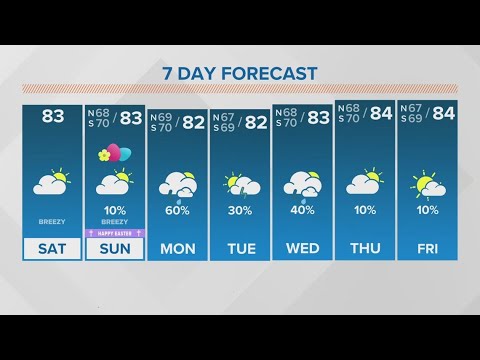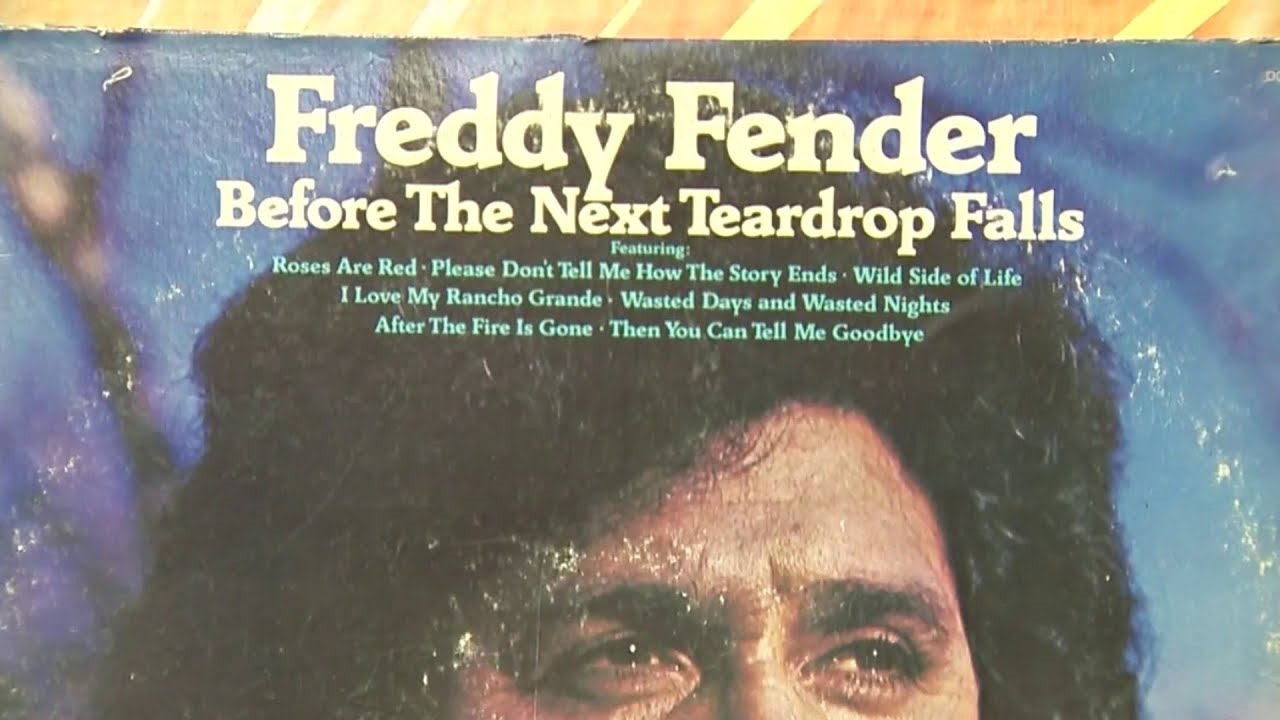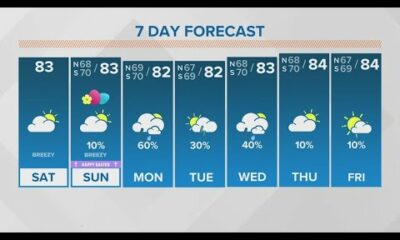News from the South - Louisiana News Feed
Trump’s death penalty push faces resistance in some red states

Trump’s death penalty push faces resistance in some red states
by Amanda Hernández, Louisiana Illuminator
March 9, 2025
Even as President Donald Trump and other national Republican leaders push to expand the use of capital punishment, some GOP-led states are moving in the opposite direction.
In an executive order he signed his first day in office, Trump directed the U.S. attorney general to seek the death penalty “for all crimes of a severity demanding its use.” In two specific circumstances — when a law enforcement officer is murdered or when the defendant accused of a capital crime is an immigrant in the country without legal status — the government will pursue the death penalty “regardless of other factors.”
The Biden administration in 2021 had imposed a moratorium on federal executions.
Additionally, Trump’s order directs the U.S. Department of Justice to help states obtain lethal injection drugs, though it remains unclear how it will do so. The order also instructs the attorney general to encourage state attorneys general and district attorneys to pursue capital charges for all eligible crimes.
Trump’s order applies only to federal crimes. Each state has its own death penalty laws for state crimes.
But growing anti-death penalty sentiment in the states may limit the impact of Trump’s directive. From proposed moratoriums to repeal efforts, state lawmakers are debating the future of capital punishment amid concerns over wrongful convictions, racial disparities and high costs. Crime experts question the death penalty’s effectiveness as a deterrent, while some religious lawmakers say it is inconsistent with their opposition to abortion.
“The death penalty in this country is dying for reasons that an executive order cannot fix,” Corinna Lain, a law professor at the University of Richmond, told Stateline.
“[Trump’s] executive order will be a mirror revealing where the American people stand on the death penalty. … People that want to go there anyway will be emboldened, and in other places, it will inspire resistance,” said Lain, who also is the author of the upcoming book “Secrets of the Killing State: The Untold Story of Lethal Injection.”
In conservative Indiana, Kansas, Kentucky and Ohio, Republican lawmakers have introduced bills to abolish the death penalty. In Georgia, the House earlier this month approved a bill that would prevent the execution of people who have intellectual disabilities. The measure, which lowers the burden of proof for intellectual disability claims and introduces a pretrial hearing on whether a defendant is intellectually disabled, now moves to the Senate for consideration.
And a GOP-sponsored bill in Oklahoma would pause all pending executions and prevent new execution dates from being scheduled.
However, another bill in Oklahoma would make people living illegally in the U.S. who are convicted of first-degree murder eligible for the death penalty. And some states, including Iowa and New Mexico, are considering bills that would expand capital punishment by making the murder of a police officer eligible for the death penalty. Both states have abolished capital punishment, but there have been multiple attempts over the years to reinstate it for specific crimes.
In Iowa, state Sen. Dennis Guth, a Republican, said the bill was introduced at the request of the family of Algona police Officer Kevin Cram, who was shot and killed in 2023 while trying to serve an arrest warrant.
Guth, one of the bill’s sponsors, argued that reinstating the death penalty for certain crimes could provide closure for a victim’s family and close friends, and that in this case it might keep others safe in the long run.
“It’s good to have a deterrent that makes people pause and consider their actions before committing a crime,” Guth said.
Florida also enacted a law earlier this year mandating the automatic imposition of capital punishment for people living illegally in the U.S. convicted of capital crimes, including first-degree murder and child rape.
The death penalty in this country is dying for reasons that an executive order cannot fix.
– Corinna Lain, law professor
Meanwhile, other states are focusing on execution methods. Lawmakers in Idaho approved a bill that could make it the first state to use the firing squad as its primary execution method. Arizona lawmakers are considering a bill to allow execution by firing squad, and legislators in Arkansas, Nebraska and Ohio are weighing bills that would add nitrogen gas hypoxia as an execution method.
“So long as capital punishment remains the law in Ohio, it should be followed, and duly enacted sentences should be carried out to provide victims’ families with the justice and finality they deserve,” Ohio state Rep. Brian Stewart, a Republican who sponsored the bill to add nitrogen gas as an execution method in the state, said in a news release.
A Gallup poll conducted in October found that 53% of Americans support the death penalty for convicted murderers — the lowest level of support since the early 1970s. Young adults also are significantly less likely than older generations to favor capital punishment, the poll found.
However, in a Gallup poll conducted in October 2023, 81% of Republicans said they supported the death penalty, a percentage that has remained fairly constant for 25 years. Only 32% of Democrats said they supported capital punishment. Sixty-eight percent of Republicans said they believe the death penalty is applied fairly, while only 28% of Democrats did.
Since 2009, seven states — Colorado, Connecticut, Illinois, Maryland, New Hampshire, New Mexico and Virginia — have legislatively abolished the death penalty, according to the National Conference of State Legislatures.
Twenty-seven states allow the death penalty, but four — California, Ohio, Oregon and Pennsylvania — have paused executions, according to the Death Penalty Information Center, a nonprofit that studies capital punishment. The group does not take a position on the death penalty, but it is critical of how it is carried out.
Some states have struggled to carry out executions, with delays ranging from difficulties obtaining lethal injection drugs to pauses put into place after botched executions. In response, some states have turned to alternative methods, including nitrogen hypoxia and firing squads.
There are 13 remaining executions scheduled for this year, although two are in Ohio, where there is a pause. South Carolina conducted an execution Friday by firing squad — the state’s first and the first in the United States in 15 years.
Since the mid-1990s, the number of new death sentences imposed in the United States also has dropped dramatically, from 316 in 1996 to 26 in 2024, according to the Death Penalty Information Center.
“This drop in death sentencing speaks volumes of the future of the death penalty because today’s death sentences are tomorrow’s executions,” Lain said.
Proposals in Indiana and Oklahoma
In Indiana, a Republican-authored House bill, which garnered bipartisan support, would have abolished the death penalty and commuted all existing death sentences to life without parole. It included a provision allowing defendants facing life without parole to petition for a review of intellectual disability. But the bill did not receive a committee hearing, which is what happened to a similar Democratic-sponsored bill in 2019.
Supporters of the current measure argued that capital punishment fails to deliver justice.
“That’s all capital punishment is — it’s the transferring of pain. It’s not the completion of healing,” said Demetrius Minor, the national manager of Conservatives Concerned, a group advocating for a reexamination of capital punishment. Minor advocated for the bill.
Meanwhile, a GOP-authored bill in Indiana that would expand death penalty eligibility also failed to advance. Under that bill, obtaining or performing an abortion would be first-degree murder, punishable by death.
In Oklahoma, a Republican-authored Senate bill would temporarily halt executions while a task force reviews the state’s death penalty practices. The bill has been sent to committee but has yet to receive a hearing. Last year, a similar proposal stalled on the House floor.
The bill would pause all pending executions, prevent new execution dates from being set and establish a five-member task force to assess whether the state has implemented the changes recommended in a 2017 review.
The bill also would suspend all statutes related to the death penalty until it is repealed, though it would not vacate existing death sentences.
“We can’t prevent the execution of innocents, and we know for a fact in other states that we have executed innocent people,” Brett Farley, the state coordinator of Oklahoma Conservatives Concerned, told Stateline. Farley also is the executive director for the Catholic Conference of Oklahoma.
“If we believe that all life is sacred, as conservatives, then how can we justify executing someone that might be innocent or perhaps even is 100% guilty? Do they not have an opportunity for redemption?” Farley said.
Since 1973, 200 former death row prisoners have been exonerated nationwide, including 11 from Oklahoma, according to the Death Penalty Information Center.
It remains unclear how Trump’s executive order urging states to impose the death penalty will influence state leaders, particularly as some Republican lawmakers have called for a more cautious approach.
“A lot of the rhetoric we’re seeing out of the Trump administration is mostly political because it’s what folks think the Republican base wants to hear,” Farley said. “But at the same time, we’re seeing Republican legislators in a number of states push back on that and say, ‘No, we need to hit the pause button here.’”
Future of capital punishment
Even in states that still allow the death penalty, logistical and legal challenges persist.
“Lethal injection is beset by a number of problems, and those problems are actually insurmountable,” Lain told Stateline. “States can’t get the drugs, while the pharmaceutical companies don’t want to sell them the drugs. States also cannot get qualified medical people to carry this out.”
Legal battles over execution protocols and wrongful convictions also continue to influence policy decisions and public perception.
Trump’s order came just days after former U.S Attorney General Merrick Garland withdrew the federal Department of Justice’s protocol for federal executions, which permitted single-drug lethal injections using pentobarbital. Garland’s review raised concerns about the drug’s potential to cause “unnecessary pain and suffering,” particularly lung damage that creates the sensation of drowning.
The first Trump administration carried out 13 federal executions — the most under any modern president. Since then, Trump has repeatedly advocated for expanding capital punishment, particularly for drug traffickers. His new administration could reinstate the pentobarbital protocol.
In December, Tennessee announced it would begin using pentobarbital but initially refused to release its new execution manual. The Tennessee Department of Correction eventually released a redacted version in January, revealing plans to administer a single 5-gram dose.
The new manual contains only a single page on lethal injection chemicals, with no specific instructions for testing, storing and administering the drugs. It also removes the requirement that the drugs come from a licensed pharmacist.
The department’s commissioner also now has the authority to deviate from the protocol whenever deemed necessary.
Fifteen states, including Alabama, Florida, Mississippi and Texas, have previously used pentobarbital in executions, while at least four others — Kentucky, Louisiana, Montana and North Carolina — have plans to use it, according to the Death Penalty Information Center.
Although executions in the U.S. are at a historic low, the states that still carry them out have increasingly shrouded the process in secrecy — particularly how and where they obtain lethal injection drugs. Many states, including Tennessee, argue that this secrecy is necessary to protect those involved in the execution process.
YOU MAKE OUR WORK POSSIBLE.
This report was originally published by Stateline, part of the States Newsroom nonprofit news network. It’s supported by grants and a coalition of donors as a 501c(3) public charity. Stateline maintains editorial independence. Contact Editor Scott S. Greenberger for questions: info@stateline.org.
Louisiana Illuminator is part of States Newsroom, a nonprofit news network supported by grants and a coalition of donors as a 501c(3) public charity. Louisiana Illuminator maintains editorial independence. Contact Editor Greg LaRose for questions: info@lailluminator.com.
The post Trump’s death penalty push faces resistance in some red states appeared first on lailluminator.com
News from the South - Louisiana News Feed
One state framed wetlands as a flooding solution. Could it work elsewhere?

by Madeline Heim and Caitlin Looby, Milwaukee Journal Sentinel, Louisiana Illuminator
April 19, 2025
ASHLAND, Wis. — In less than 10 years, three catastrophic floods ravaged northwestern Wisconsin and changed the way people think about water.
The most severe, in July 2016, slammed Ashland with up to 10 inches of rain in less than a day — a month’s worth of rain fell in just two hours. As rivers swelled to record highs, major highways broke into pieces and culverts washed away. It took months for roads to reopen, with more than $41 million in damage across seven counties.
The Marengo River, which winds through forests and farmland before meeting the Bad River that flows into Lake Superior, was hit hard during these historic deluges. Centuries earlier, the upper watershed would have held onto that water, but logging and agriculture left the river disconnected from its floodplain, giving the water nowhere safe to go.
Today, the Marengo River stands as an example of a new kind of solution. Following the record floods, state leaders invested in opening up floodplains and restoring wetlands to relieve flooding. As the need to adapt to disasters grows more urgent, the Marengo River serves as an example that there’s a cheaper way to do so: using wetlands.
“We can’t change the weather or the patterns… but we can better prepare ourselves,” said MaryJo Gingras, Ashland County’s conservationist.
Wetlands once provided more natural flood storage across Wisconsin and the Mississippi River Basin, soaking up water like sponges so it couldn’t rush further downstream. But about half of the country’s wetlands have been drained and filled for agriculture and development, and they continue to be destroyed, even as climate change intensifies floods.
As the federal government disposes of rules to protect wetlands, environmental advocates want to rewrite the ecosystem’s narrative to convince more people that restoration is worth it.
Wetlands aren’t just pretty places, advocates argue, but also powerhouses that can save communities money by blunting the impact of flood disasters. A 2024 Wisconsin law geared at preventing such disasters before they happen, inspired by the wetland work in the Marengo River watershed, is going to test that theory.
“Traditionally, the outreach has been, ‘We want to have wetlands out here because they’re good for ducks, frogs and pretty flowers,’” said Tracy Hames, executive director of the Wisconsin Wetlands Association. “What do people care about here? They care about their roads, their bridges, their culverts … how can wetlands help that?”
Bipartisan bill posed wetlands as flood solution
Northern Wisconsin isn’t the only place paying the price for floods. Between 1980 and 2025, the U.S. was struck by 45 billion-dollar flood disasters, according to the National Oceanic and Atmospheric Administration, with a cumulative price tag of nearly $206 billion. Many parts of the vast Mississippi River Basin receive up to eight inches more rain annually than they did 50 years ago, according to a 2022 analysis from Climate Central, a nonprofit organization that analyzes climate science.
Damaging floods are now so common in the states that border the Mississippi River, including Wisconsin, that the issue can’t be ignored, said Haley Gentry, assistant director of the Tulane Institute on Water Resources Law and Policy in New Orleans.
“Even if you don’t agree with certain (regulations) … we absolutely have to find ways to reduce damage,” Gentry said.
Former Wisconsin state Rep. Loren Oldenburg, a Republican who served a flood-prone district in southwest Wisconsin until he lost the seat last year, was interested in how wetlands could help.
Oldenburg joined forces with Republican state Sen. Romaine Quinn, who represents northern Wisconsin and knew of the work in the Marengo River watershed. The lawmakers proposed a grant program for flood-stricken communities to better understand why and where they flood and restore wetlands in areas that need the help most.
Jennifer Western Hauser, policy liaison at the Wisconsin Wetlands Association, met with Democratic and Republican lawmakers to advocate for the bill. She emphasized problems that might get their attention — related to transportation, emergency services, insurance, or conservation — that wetland restoration could solve. She said she got a lot of head-nods as she explained that the cost of continually fixing a washed-out culvert could vanish from storing and slowing floodwaters upstream.
“These are issues that hit all over,” she said. “It’s a relatable problem.”
(MaryJo Gingras/Ashland County Land & Water Conservation Dept.)
The bill passed unanimously and was signed into law by Democratic Gov. Tony Evers in April 2024. Evers and the Republican-controlled Legislature approved $2 million for the program in the state’s most recent budget.
Twenty-three communities applied for the first round of grant funding, which offered two types of grants — one to help assess flood risk, and another grant to help build new wetlands to reduce that risk. Eleven communities were funded, touching most corners of the state, according to Wisconsin Emergency Management, which administered the grants.
Brian Vigue, freshwater policy director for Audubon Great Lakes, said the program shows Wisconsinites have come a long way in how they think about wetlands since 2018, when the state government made it easier for developers to build in them.
There’s an assumption that wetland restoration comes only at the expense of historically lucrative land uses like agriculture or industry, making it hard to gain ground, Vigue said. But when skeptics understand the possible economic benefits, it can change things.
“When you actually find something with the return on investment and can prove that it’s providing these benefits … we were surprised at how readily people that you’d assume wouldn’t embrace a really good, proactive wetland conservation policy, did,” he said.
Private landowners need to see results
About three-quarters of the remaining wetlands in the lower 48 states are on privately owned land, including areas that were targeted for restoration in the Marengo River watershed. That means before any restoration work begins, the landowner must be convinced that the work will help, not hurt them.
For projects like this to work, landowner goals are a priority, said Kyle Magyera, local government outreach specialist at the Wisconsin Wetlands Association, because “they know their property better than anyone else.”
Farmers, for example, can be leery that beefing up wetlands will take land out of production and hurt their bottom line, Magyera said.
In the Marengo watershed, Gingras worked with one landowner who had farmland that wasn’t being used. They created five new wetlands across 10 acres that have already decreased sediment and phosphorus runoff from entering the river. And while there hasn’t been a flood event yet, Gingras expects the water flows to be slowed substantially.
This work goes beyond restoring wetland habitat, Magyera said, it’s about reconnecting waterways. In another project, Magyera worked on a private property where floods carved a new channel in a ravine that funneled the water faster downstream. The property now has log structures that mimic beaver dams to help slow water down and reconnect these systems.
(Mark Hoffman/Milwaukee Journal Sentinel)
Now that the first round of funding has been disbursed in Wisconsin’s grant program, grantees across the state are starting work on their own versions of natural flood control, like that used in Marengo.
In Emilie Park, along the flood-prone East River in Green Bay, a project funded by the program will create 11 acres of new wetlands. That habitat will help store water and serve as an eco-park where community members can stroll through the wetland on boardwalks.
In rural Dane County, about 20 miles from the state capital, a stretch of Black Earth Creek will be reconnected to its floodplain, restoring five and a half acres of wetlands and giving the creek more room to spread out and reduce flood risk. The creek jumped its banks during a near record-breaking 2018 rainstorm, washing out two bridges and causing millions of dollars in damage.
Voluntary program could be of interest elsewhere
Nature-based solutions to flooding have been gaining popularity along the Mississippi River. Wisconsin’s program could serve as a “national model” for how to use wetlands to promote natural flood resilience, Quinn wrote in a 2023 newspaper editorial supporting the bill.
Kyle Rorah, regional director of public policy for the Great Lakes/Atlantic region of Ducks Unlimited, said he’s talking about the Wisconsin grant program to lawmakers in other states in the upper Midwest, and that he sees more appetite for this model than relying on the federal government to protect wetlands.
And Vigue has found that stakeholders in industries like fishing, shipping and recreation are receptive to using wetlands as infrastructure.
But Gentry cautioned that voluntary restoration can only go so far, because it “still allows status-quo development and other related patterns to continue.”
Still, as the federal government backs off of regulation, Gentry said she expects more emphasis on the economic value of wetlands to drive protection.
Some of that is already happening. A 2024 analysis from the Union of Concerned Scientists found that wetlands save Wisconsin and the upper Midwest nearly $23 billion a year that otherwise would be spent combating flooding.
“Every level of government is looking at ways to reduce costs so it doesn’t increase taxes for their constituents,” Gingras said.
John Sabo, director of the ByWater Institute at Tulane University, said as wetlands prove their economic value in reducing flood damage costs, taxpayers will see their value.
“You have to think about (wetlands) as providing services for people,” Sabo said, “if you want to get people on the other side of the aisle behind the idea (of restoring them).”
And although the Wisconsin grant program is small-scale for now, he said if other states bordering the Mississippi River follow its lead, it could reduce flooding across the region.
“If all upstream states start to build upstream wetlands,” he said, “that has downstream impacts.”
YOU MAKE OUR WORK POSSIBLE.
Louisiana Illuminator is part of States Newsroom, a nonprofit news network supported by grants and a coalition of donors as a 501c(3) public charity. Louisiana Illuminator maintains editorial independence. Contact Editor Greg LaRose for questions: info@lailluminator.com.
The post One state framed wetlands as a flooding solution. Could it work elsewhere? appeared first on lailluminator.com
News from the South - Louisiana News Feed
Easter Weekend: Muggy, warm, and windy

SUMMARY: Easter Weekend will be warm, muggy, and breezy, with mostly cloudy skies and temperatures in the low 80s. Current conditions are in the low 70s, making it a sticky day for events like the Crescent City Classic. While there’s a slight chance of rain on Sunday, most of the day will remain dry. Winds from the southeast could gust near 30 mph. Next week, a front will bring increased rain chances and storms starting Monday, with unsettled conditions continuing into Tuesday and Wednesday. Despite this, warm temperatures in the 80s will persist throughout the week.

Easter Weekend looks very nice! It will be hot, humid, and windy with high temperatures in the lower 80s both afternoons. More clouds will be around with some breaks
News from the South - Louisiana News Feed
Vicente Fernandez and Freddy Fender join National Recording Registry

SUMMARY: This year, Vicente Fernandez’s “El Rey” and Freddy Fender’s “Before the Next Teardrop Falls” were inducted into the National Recording Registry, alongside Lin-Manuel Miranda’s *Hamilton* album. Congressman Joaquin Castro has championed the inclusion of more Latino artists in the registry, noting that Latino representation is only 5%. Over the last three years, with input from constituents, Castro has successfully nominated 30 songs and albums, including iconic Latino tracks. He advocates for more Latino contributions to be recognized, including Selena’s work. Castro will continue gathering nominations for 2026, aiming to better reflect Latino cultural influence in the registry.

Each year since 2000, the Library of Congress has selected influential songs and albums to be preserved in the National Recording Registry. This year, three Latino artists were inducted — two of them with deep roots in Latino culture and South Texas.
-

 Mississippi Today7 days ago
Mississippi Today7 days agoLawmakers used to fail passing a budget over policy disagreement. This year, they failed over childish bickering.
-

 Mississippi Today7 days ago
Mississippi Today7 days agoOn this day in 1873, La. courthouse scene of racial carnage
-

 Local News6 days ago
Local News6 days agoSouthern Miss Professor Inducted into U.S. Hydrographer Hall of Fame
-

 News from the South - Alabama News Feed5 days ago
News from the South - Alabama News Feed5 days agoFoley man wins Race to the Finish as Kyle Larson gets first win of 2025 Xfinity Series at Bristol
-

 News from the South - Alabama News Feed5 days ago
News from the South - Alabama News Feed5 days agoFederal appeals court upholds ruling against Alabama panhandling laws
-

 News from the South - Alabama News Feed7 days ago
News from the South - Alabama News Feed7 days agoBellingrath Gardens previews its first Chinese Lantern Festival
-

 News from the South - Texas News Feed7 days ago
News from the South - Texas News Feed7 days ago1 dead after 7 people shot during large gathering at Crosby gas station, HCSO says
-

 News from the South - Florida News Feed6 days ago
News from the South - Florida News Feed6 days agoJacksonville University only school with 2 finalist teams in NASA’s 2025 Human Lander Challenge












































